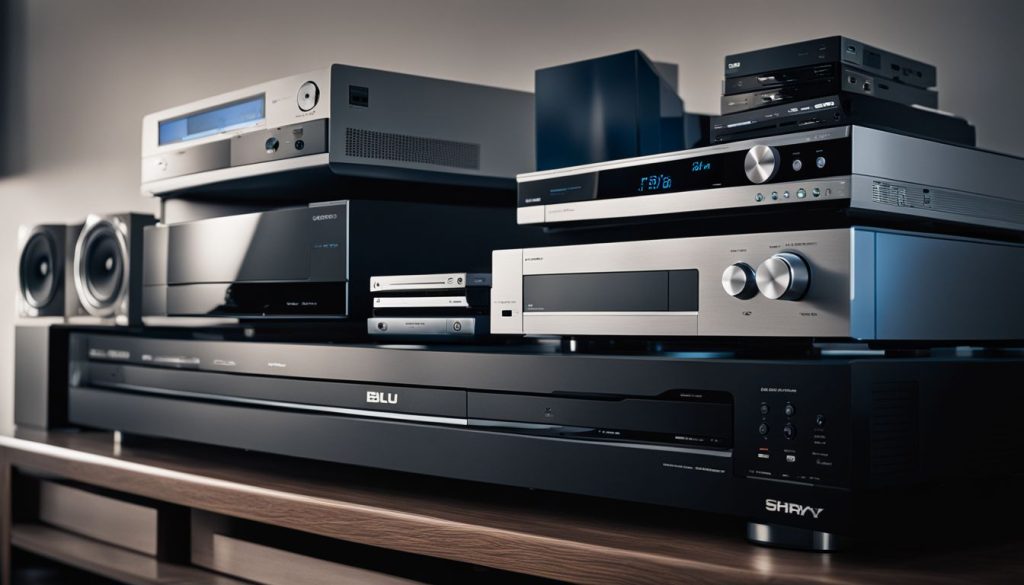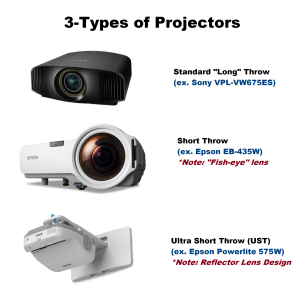DVD and Blu-ray Players: What They Do, How They Work, Applications, and Safe Usage Tips

DVD and Blu-ray players have been essential devices in home entertainment systems for many years. With the ability to play movies, music, and other multimedia formats, these devices provide high-quality audio and video experiences. In this article, we’ll explore what DVD and Blu-ray players do, how they work, their applications, and how to use them safely.
1. What Do DVD and Blu-ray Players Do? (Introduction, Common Types, and Uses)
A DVD (Digital Versatile Disc) or Blu-ray player is an electronic device designed to read and play discs containing digital data, such as movies, music, and video games. Blu-ray players provide higher video and audio quality compared to traditional DVD players due to their ability to read more data from the disc.
Common Types of DVD and Blu-ray Players:
- Standard DVD Players: These players are designed to play DVDs, which store standard-definition content. They are typically more affordable but offer lower video and audio quality compared to Blu-ray players.
- Blu-ray Players: Blu-ray players can read both DVDs and Blu-ray discs. They offer high-definition video quality and superior audio performance, making them ideal for watching HD or 4K content.
- 4K Ultra HD Blu-ray Players: These are a more advanced version of Blu-ray players, supporting 4K resolution for ultra-high-definition video quality. They are compatible with 4K TVs and offer the best viewing experience available.
Applications of DVD and Blu-ray Players:
- Home Entertainment: Both DVD and Blu-ray players are widely used for watching movies and TV shows at home.
- Video Gaming: Many gaming consoles, such as PlayStation and Xbox, include built-in Blu-ray or DVD players for playing games and movies.
- Music and Media Playback: Apart from videos, DVD and Blu-ray players can also be used to play audio CDs, music DVDs, and Blu-ray audio discs.
- Movie Collection: Blu-ray and DVD players are ideal for individuals who have a collection of physical media, allowing them to watch their favorite movies with superior quality.
2. How Do DVD and Blu-ray Players Work? (Principle of Operation and Key Components)
DVD and Blu-ray players function similarly, with some differences in how they read data from discs. Both devices rely on lasers to read data stored on the discs, but Blu-ray players use a blue laser, while DVD players use a red laser. Here’s how they work:
Key Components of DVD and Blu-ray Players:
- Laser Lens: Both DVD and Blu-ray players use a laser to read data encoded on the disc. The laser scans the surface of the disc and retrieves the digital information.
- Optical Pickup: This component holds the laser lens and translates the laser signals into data that can be processed by the player’s electronics.
- Spindle Motor: The spindle motor spins the disc at high speed to allow the laser to read the encoded data.
- Decoder: The decoder takes the digital data retrieved by the laser and translates it into a video and audio signal that can be displayed on a TV or audio system.
- Output Ports: These are used to connect the player to a TV or sound system via HDMI, optical, or coaxial cables, depending on the device’s specifications.
How It Works:
- Data Reading: When you insert a DVD or Blu-ray disc, the laser lens scans the surface of the disc. The data on the disc is encoded in the form of microscopic pits and lands that reflect the laser differently.
- Signal Processing: The reflected light is then converted into digital data, which the player’s decoder processes to create audio and video signals.
- Display and Sound: The video and audio signals are sent to your TV or audio system, allowing you to view the content and hear the sound.
3. Where Are DVD and Blu-ray Players Used? (Practical Applications)
DVD and Blu-ray players are commonly used in various settings. While they are essential in home entertainment, their applications extend beyond that.
Common Uses of DVD and Blu-ray Players:
- Home Theaters: They are a central part of home entertainment systems, allowing users to enjoy high-quality movies and shows with superior sound and visuals.
- Gaming Consoles: Many gaming consoles like the PlayStation 4, Xbox One, and newer models feature built-in Blu-ray players, allowing users to play games and watch movies.
- Multimedia Playback: DVD and Blu-ray players can be used to play a wide variety of multimedia content, including music DVDs and special editions of movies with bonus features.
- Personal Collections: For movie lovers, owning a Blu-ray or DVD player is essential for watching their collection of physical discs at home.
Real-Life Applications:
- Home Entertainment: You can watch your favorite movies and TV shows in high-definition with a Blu-ray player or enjoy classic content on a DVD player.
- Classroom and Educational Settings: Some educational institutions use DVD players to play educational videos and training materials in classrooms.
- Public Events: Blu-ray players can be used in event spaces for screening high-definition movies, documentaries, or promotional videos.
4. How to Use DVD and Blu-ray Players Safely (Safety Tips and Important Considerations)
To ensure the longevity of your DVD or Blu-ray player and maintain safety, follow these guidelines:
Safety Tips for Using DVD and Blu-ray Players:
- Proper Ventilation: Ensure the player has adequate ventilation to prevent overheating. Place the player in an open area with plenty of space around it for airflow.
- Avoid Excessive Heat: Keep the player away from heat sources, such as radiators or direct sunlight, as extreme temperatures can damage the internal components.
- Handle Discs with Care: Always handle DVDs and Blu-ray discs by the edges to avoid fingerprints or scratches. Clean discs with a soft, lint-free cloth before inserting them into the player.
- Power Off After Use: Turn off the player when not in use to save energy and extend the life of the device.
- Check Connections: Ensure all cables are securely connected before using the player. Loose cables can lead to signal loss or poor picture and sound quality.
Important Considerations:
- Compatibility: Ensure that your TV or projector is compatible with the output resolution of your DVD or Blu-ray player. For instance, a 4K Blu-ray player requires a 4K-compatible TV to fully experience the resolution.
- Software Updates: Occasionally check for software updates for your Blu-ray player, as manufacturers may release firmware updates to improve performance or compatibility with new formats.
- Disc Condition: Only insert clean and undamaged discs into the player. Scratches or dirt on the surface of the disc can lead to playback issues.
Conclusion
DVD and Blu-ray players continue to play an essential role in home entertainment by offering high-quality audio and video playback. By understanding how these devices work, their applications, and how to use them safely, you can make the most out of your player and enjoy movies, music, and other multimedia content at home. Whether you’re enjoying a movie night or building a home theater system, these devices remain a reliable option for immersive entertainment experiences.







